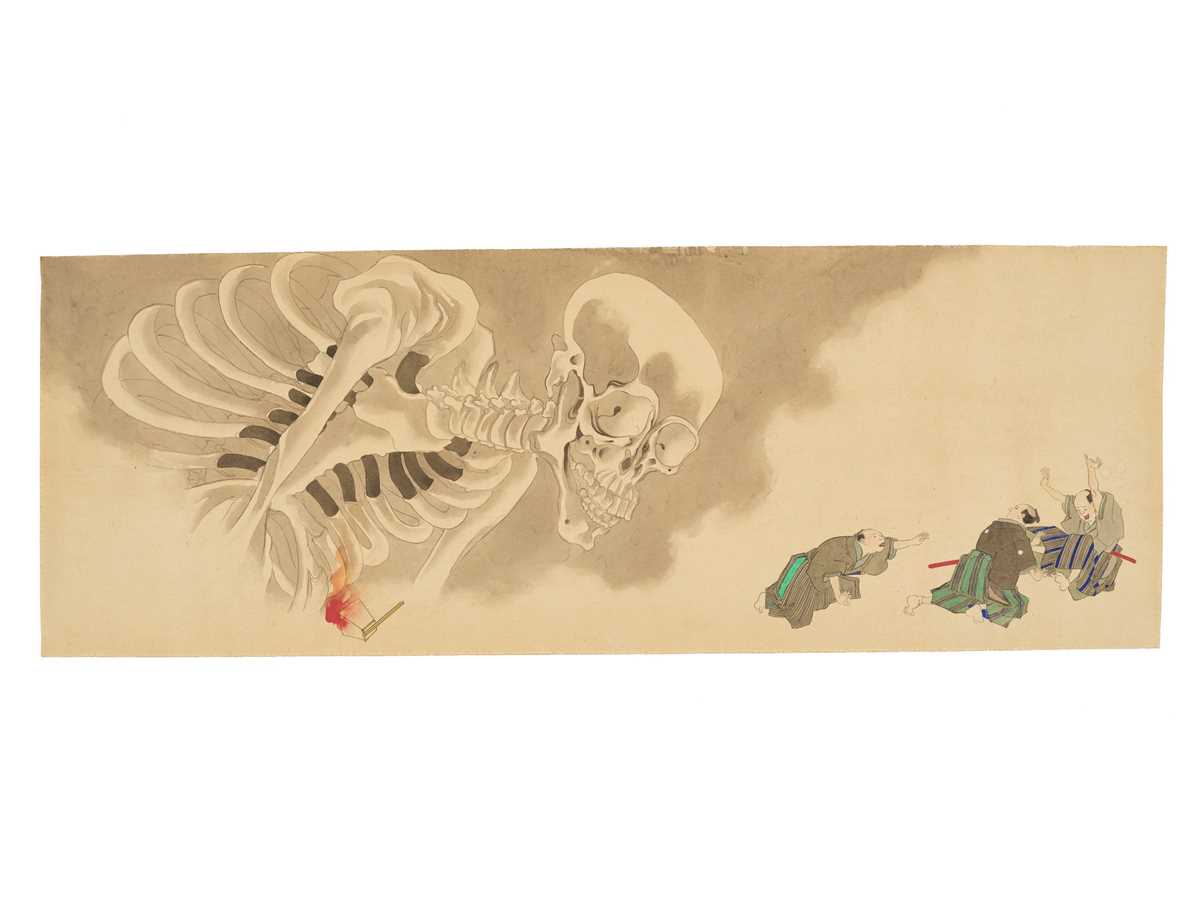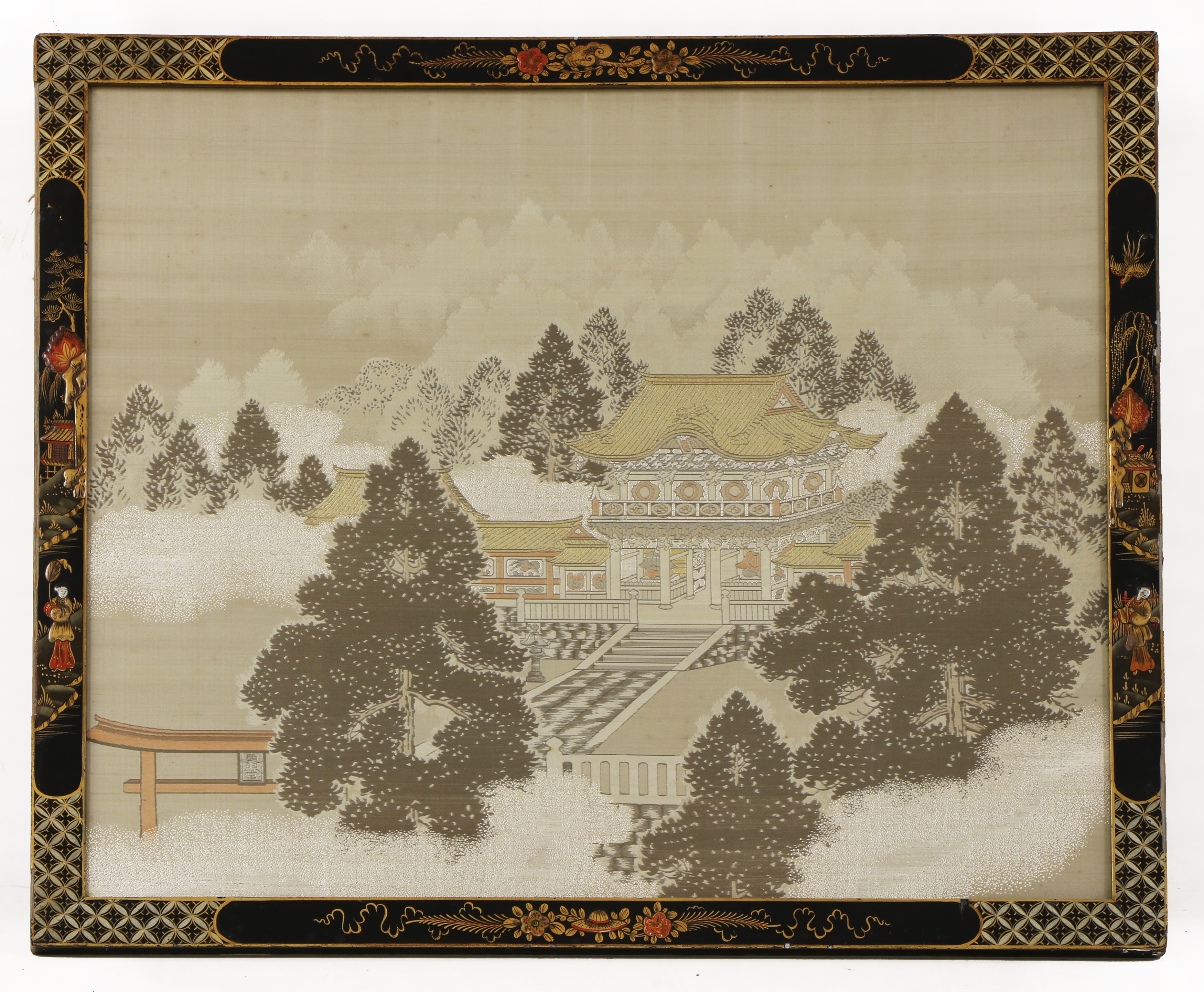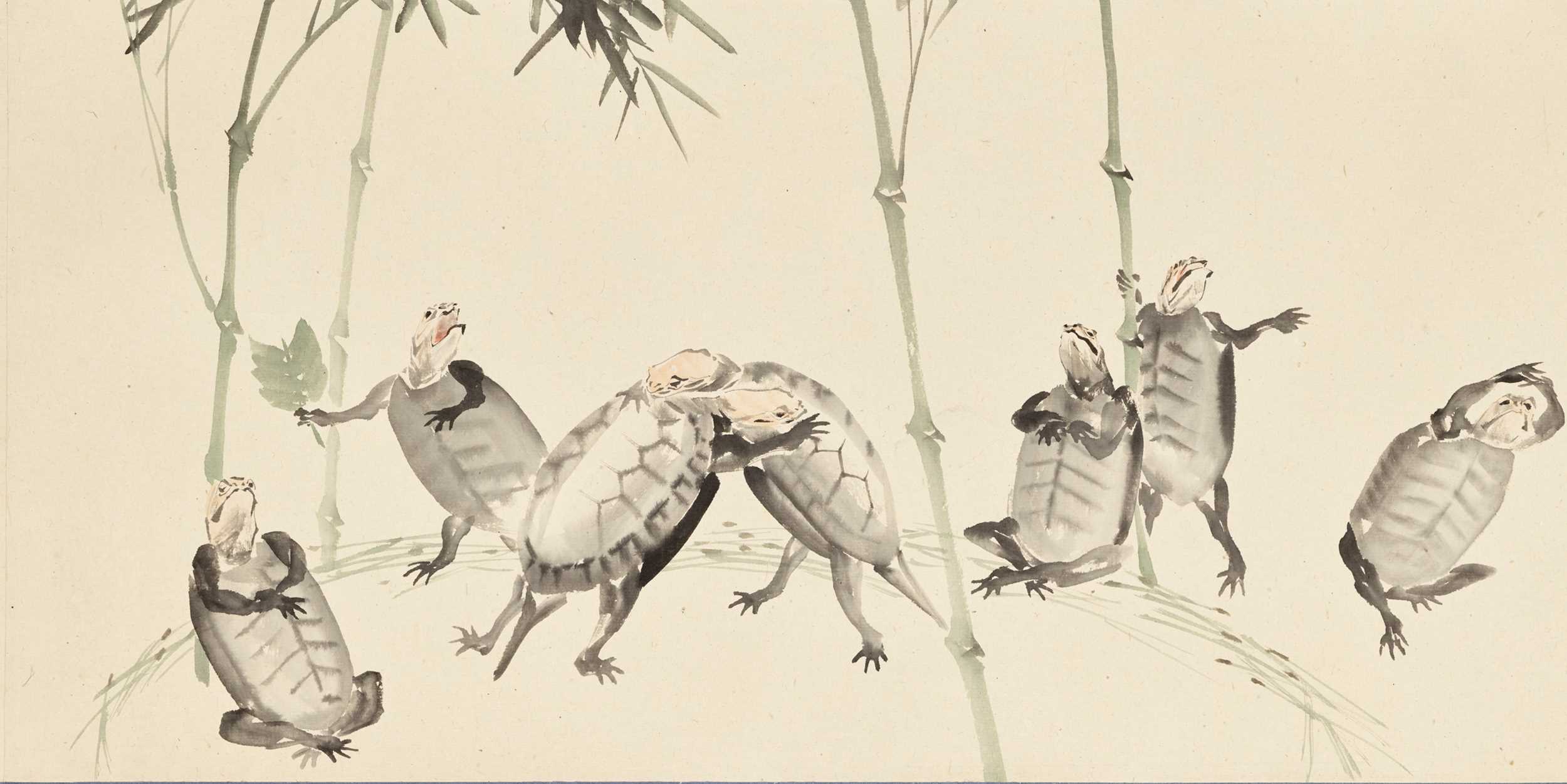A JAPANESE HANDSCROLL PAINTING OF THE NIJO IMPERIAL EXCURSION OF 1626, MAKIMONO MEIJI PERIOD OR EARLIER, 19TH CENTURY OR EARLIER In ink and colour on paper, depicting a long procession of courtiers from the entourage of Emperor Go-Mizunoo, reading from right to left and starting with the arrival of the first travellers at the gates of Nijo Castle, Kyoto, the procession consisting of a large number of subjects including daimyo, ladies-in-waiting, courtiers, musicians, servants and many others, the names and titles of the most prominent travellers written above, the Imperial entourage moving down the streets of Higashinotoin and Horikawa toward the mansion, with seals throughout the scroll for Watanabe Bunko (Watanabe Library, Prof. Kyukichi Watanabe's collection of books and scroll paintings at Kyushu University Library), in the style of the Kano School of Kyoto, 38cm x 2,546cm (approx.). Provenance: an English private collection, Cambridgeshire. See the Royal Collection Trust, access. no. RCIN 1145973, for another very similar scroll painting by Bunkei (act. 1855) depicting the same section of the procession. This unusually long makimono is probably the second from a set of five scroll paintings depicting the procession of Emperor Go-Mizunoo, Empress Tôfukumon'in and their retinue to Nijo Castle, Kyoto, in 1626. By summoning the Imperial Court to its Kyoto stronghold for five days, the second Tokugawa Shogun Hidetada was displaying his power: the warrior lord demonstrated that he could summon the Emperor and his entire court away from the venerated space of his palace at a whim. Witnesses' accounts describe a procession made up of thousands of courtiers and the spectacle of the Imperial carriages as striking. This was the last time an Emperor was ever invited to visit a shogunal estate as this excursion to Nijo Castle established for several generations the power of the Tokugawa over the Emperor. Only a small number of these handscrolls are known. A famous set dates from the 17th century and belongs to the Japanese Imperial Household Collections housed at Sannomaru Shôzôkan, Tokyo. The sets are usually made up of five scrolls: the first depicts the Castle building; the second the front of the procession, with the four horse-drawn carriages of the Emperor's relatives; the third the Imperial palanquin, high ranking courtiers and entertainers; the fourth the final day of the visit and the last is inscribed with an account of the various festivities and gifts presented to the Emperor. Their provenance is unknown, but it is possible that these were commissioned by courtiers who had taken part in the excursion as a souvenir commemorating the event, or as dowries for women of high-ranking families. Suden, the official spokesperson for the Tokugawa, was the first to record the event and an illustrated version was published a few months later. His account opens with the depiction of two attendants arriving at the gates of the Castle and the same iconography can be found at the opening of lot 288. Read more »
A JAPANESE HANDSCROLL PAINTING OF THE NIJO IMPERIAL EXCURSION OF 1626, MAKIMONO MEIJI PERIOD OR EARLIER, 19TH CENTURY OR EARLIER In ink and colour on paper, depicting a long procession of courtiers from the entourage of Emperor Go-Mizunoo, reading from right to left and starting with the arrival of the first travellers at the gates of Nijo Castle, Kyoto, the procession consisting of a large number of subjects including daimyo, ladies-in-waiting, courtiers, musicians, servants and many others, the names and titles of the most prominent travellers written above, the Imperial entourage moving down the streets of Higashinotoin and Horikawa toward the mansion, with seals throughout the scroll for Watanabe Bunko (Watanabe Library, Prof. Kyukichi Watanabe's collection of books and scroll paintings at Kyushu University Library), in the style of the Kano School of Kyoto, 38cm x 2,546cm (approx.). Provenance: an English private collection, Cambridgeshire. See the Royal Collection Trust, access. no. RCIN 1145973, for another very similar scroll painting by Bunkei (act. 1855) depicting the same section of the procession. This unusually long makimono is probably the second from a set of five scroll paintings depicting the procession of Emperor Go-Mizunoo, Empress Tôfukumon'in and their retinue to Nijo Castle, Kyoto, in 1626. By summoning the Imperial Court to its Kyoto stronghold for five days, the second Tokugawa Shogun Hidetada was displaying his power: the warrior lord demonstrated that he could summon the Emperor and his entire court away from the venerated space of his palace at a whim. Witnesses' accounts describe a procession made up of thousands of courtiers and the spectacle of the Imperial carriages as striking. This was the last time an Emperor was ever invited to visit a shogunal estate as this excursion to Nijo Castle established for several generations the power of the Tokugawa over the Emperor. Only a small number of these handscrolls are known. A famous set dates from the 17th century and belongs to the Japanese Imperial Household Collections housed at Sannomaru Shôzôkan, Tokyo. The sets are usually made up of five scrolls: the first depicts the Castle building; the second the front of the procession, with the four horse-drawn carriages of the Emperor's relatives; the third the Imperial palanquin, high ranking courtiers and entertainers; the fourth the final day of the visit and the last is inscribed with an account of the various festivities and gifts presented to the Emperor. Their provenance is unknown, but it is possible that these were commissioned by courtiers who had taken part in the excursion as a souvenir commemorating the event, or as dowries for women of high-ranking families. Suden, the official spokesperson for the Tokugawa, was the first to record the event and an illustrated version was published a few months later. His account opens with the depiction of two attendants arriving at the gates of the Castle and the same iconography can be found at the opening of lot 288. Read more »















Try LotSearch and its premium features for 7 days - without any costs!
Be notified automatically about new items in upcoming auctions.
Create an alert